The Changing Hands blog series explores the backstories of books in Special Collections by focusing on the marks left behind by those who owned, read, or sold them before they were acquired by the Binghamton University Libraries.
Late last summer we were up on the third floor of Bartle looking through some books in the multi-volume series of German literary works published as Bibliothek des Literarischen Vereins in Stuttgart: those particular volumes will be the subject of a later post in this series about bookstamps. Imagine our surprise when we opened some other volumes from the set and found that forty-five volumes bore indications that they had once been in the library of the famed nineteenth-century American poet Henry Wadsworth Longfellow!
Longfellow (1807-1882) was one of the best-known poets of his day, and his house in Cambridge, MA is now a National Historic Site. He was a professor of modern languages at Harvard from 1836 to 1854, and took a great interest in German literature. He seems to have been acquiring volumes from this set as they were published: his copy of Volume 16 (containing Schmeller’s edition of the Carmina Burana) was published in 1847, and Longfellow’s inscription is dated the following year:
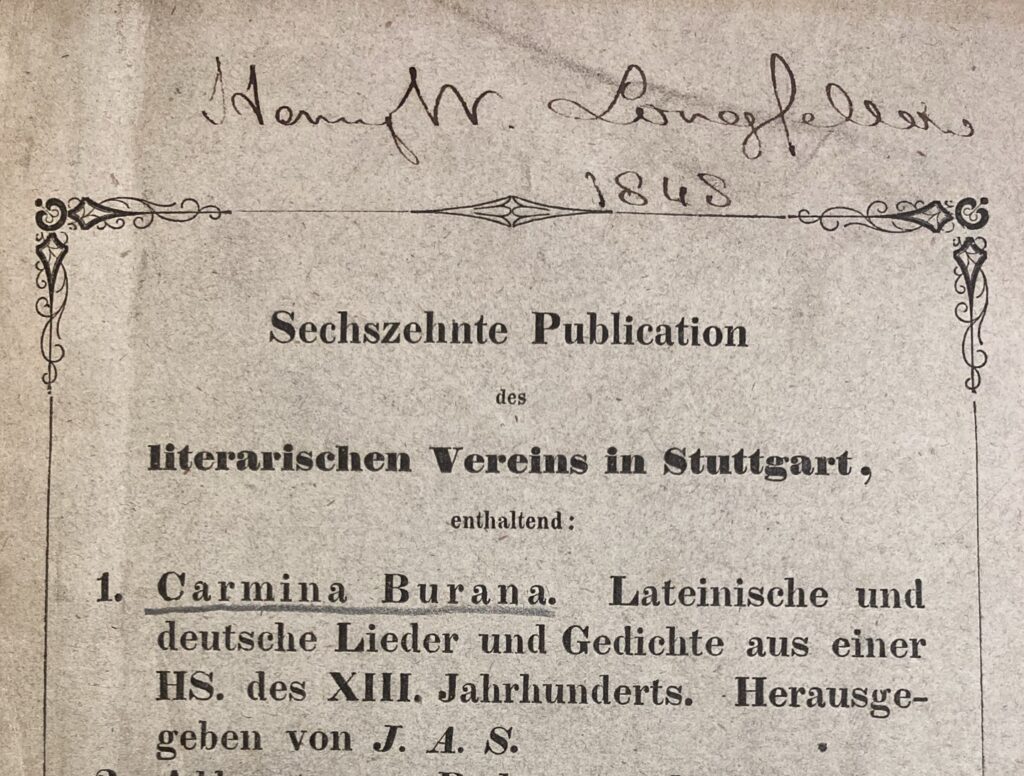
Many volumes from Longfellow’s extensive library remain at his home in Cambridge, but a large number of others were dispersed over the years. The volumes now at Binghamton eventually passed through the hands of Taylor Starck, who taught German art and culture at Harvard from 1920 until his retirement in 1956.
Starck appears to have acquired the Longfellow volumes in the early 1930s, and he had them bound in sturdy black cloth. Until that time the volumes may have been bound only in their original paper wrappers, which is where Longfellow typically seems to have written his name. Luckily for us, Starck asked the binder to keep the original wrappers intact when the volumes were bound, which preserved Longfellow’s signatures (see the penciled “bind in” note to the left of the signature in Volume I-I pictured below):

Starck sometimes signed the front pastedowns (these are usually partially or entirely obscured by the library card pockets; some of the inscriptions are dated 1932), but each volume has Starck’s name penciled in as a binder’s note, typically on the verso of the title page.
Twelve volumes from the set do not contain Longfellow’s signature, but we think these are very likely to have originally belonged to the poet: four are lacking the original wrappers where Longfellow would likely have signed his name; the other eight bear Starck provenance marks, but not Longfellow’s (though they appear between other volumes which are certainly his) and do not bear other markings which suggest different origins, so it seems a fairly safe bet to suggest that these are very likely Longfellow’s copies.
We have been unable to determine exactly how Starck’s books then made their way to Binghamton, and would welcome any information our readers might have on that front.
Once we had identified the Longfellow volumes, they went to Preservation for new protective covers, and we worked with our colleagues in Cataloging to add notes to the library catalog records about the Longfellow and Starck provenance marks. The books are now available in Special Collections for consultation during our regular hours.
You just never know what you’ll find in the library stacks!
* * * *
Selected volumes from the series Bibliothek des Literarischen Vereins in Stuttgart. Special Collections PT1101.L5.


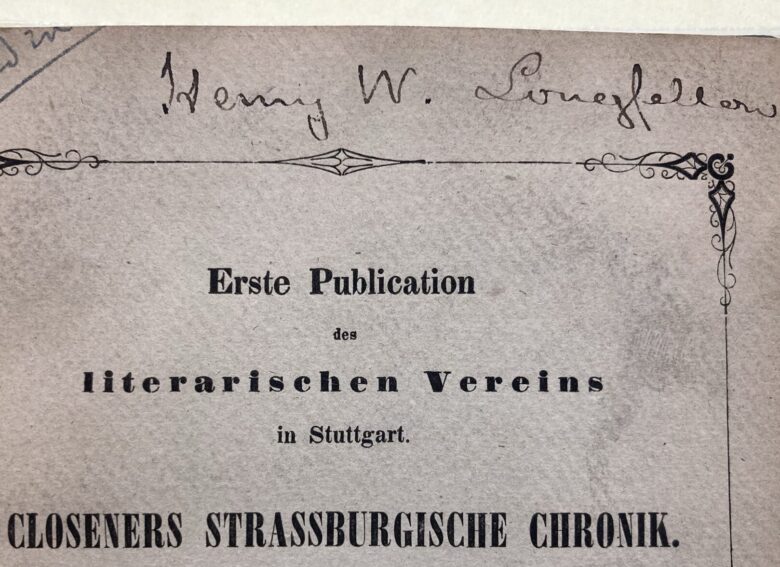
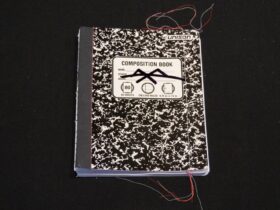
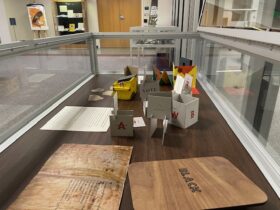

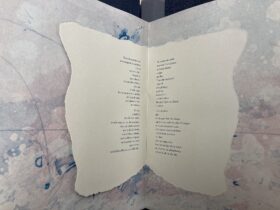
Leave a Reply
View Comments